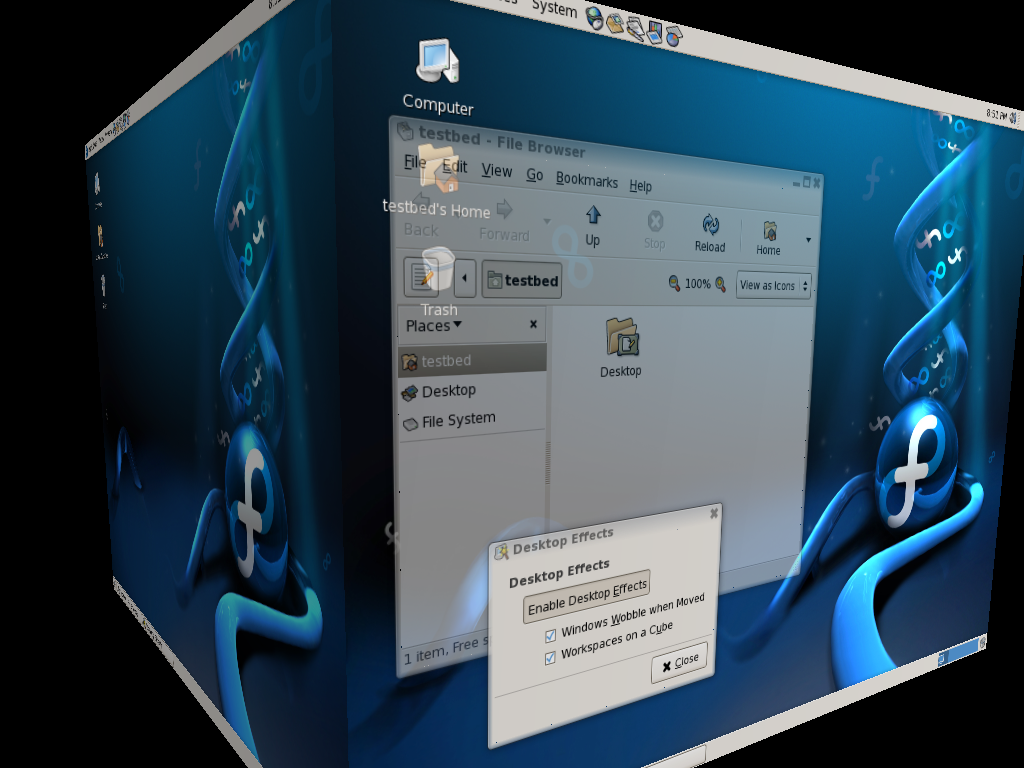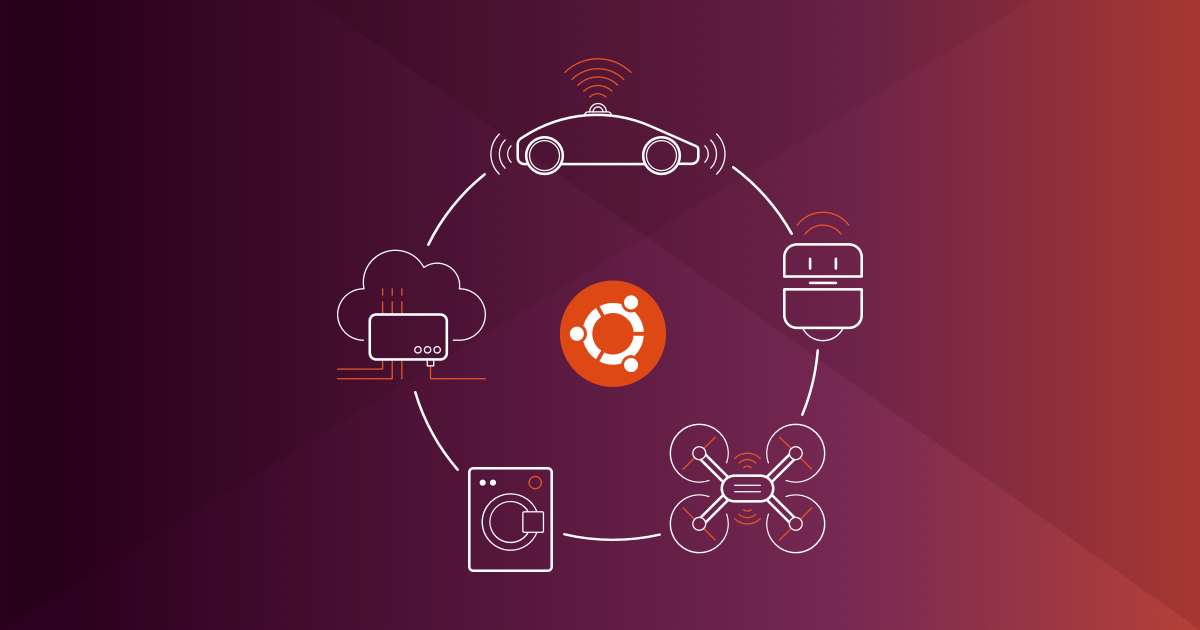
More screenshots....
Link....
Ubuntu goes 3-D
IMAX theaters needed
Published Tuesday 16th October 2007 19:50 GMT
The folks at Canonical have started to prepare their servers for downloads of the latest Ubuntu release - 7.10 or "Gutsy Gibbon."
Past Ubuntu releases have been marred by downed servers, as the Umbongo faithful rush to get their fresh code injection. So, this time around, Mark Shuttleworth and crew are doing their outreach early. They've started talking up the OS before it's available on Thursday, hoping to spread out demand a bit.
With 7.10, Umbongo users will find fresh additions for the client and the server.
Most notably for the client crowd is the production version of Compiz. This software gives Ubuntu some 3-D graphics that by our account surpass anything seen on Windows or Mac OS X. We've run Compiz in beta for several weeks now with no problems and expect users will enjoy the production version.
It's mostly eye candy to be sure, although the Compiz code serves a larger purpose. It adds a contemporary feel to the often 1990s looking Linux desktop. In addition, it shows that the open source development model can out pace the big boys with style when needed.
On the more practical front, users will find the Tracker tool for indexing files on your system. This software mimics the Spotlight tool available for many moons with Mac OS X and Vista's desktop search. Basically, you're able to find any file on a system with relative ease.
"I believe we're the first (Linux) distribution to deliver that out of the box," Shuttleworth said, during a conference call with reporters.
Shuttleworth also highlighted 7.10's improved support for plug-and-play hardware such as printers. The Ubuntu update system has been tweaked to permit more hardware updates over the coming weeks, meaning that it should be just about the most up-to-date Linux OS available.
Umbongo customers will see better support for VGA projectors as well, so you just might be able to run a public demonstration of your fancy Linux rig.
Those of you dabbling with the dark side via dual boot Windows machines will enjoy the ability to read and write files on the (NTFS) Windows partition.
And the developers/Firefox fanatics can rest easy now that Canonical has permitted the automatic installation of validated browser plugins.
Serbongo Montoemgro
While Canonical enjoys its client goodwill - despite Shuttleworth's predilection for gluing wombats - it's also very focused on the server. It dished out the "first real" server release about one year ago and is hammering away at some server specific tools.
For example, there's a tool dubbed AppArmor that provides a level of isolation on server systems. Certain processes are cordoned off into their own area. "Even in the event of a compromise of that process, the attacker's ability to gain access to more information on the server or to compromise other pieces of the server is greatly limited," Shuttleworth said.
Canonical is hyping a "tickless kernel" as well that is a fine-tuned idle mode which cuts down on system power consumption.
Developers will see a fresh release of Python, along with support for OpenMP with GCC 4.2
The latest Ubuntu release will enjoy 18 months of maintenance. The next Long Term Support OS will arrive in 2008 and have three years of support on the desktop and five years on the server.
<
IMAX theaters needed
Published Tuesday 16th October 2007 19:50 GMT
The folks at Canonical have started to prepare their servers for downloads of the latest Ubuntu release - 7.10 or "Gutsy Gibbon."
Past Ubuntu releases have been marred by downed servers, as the Umbongo faithful rush to get their fresh code injection. So, this time around, Mark Shuttleworth and crew are doing their outreach early. They've started talking up the OS before it's available on Thursday, hoping to spread out demand a bit.
With 7.10, Umbongo users will find fresh additions for the client and the server.
Most notably for the client crowd is the production version of Compiz. This software gives Ubuntu some 3-D graphics that by our account surpass anything seen on Windows or Mac OS X. We've run Compiz in beta for several weeks now with no problems and expect users will enjoy the production version.
It's mostly eye candy to be sure, although the Compiz code serves a larger purpose. It adds a contemporary feel to the often 1990s looking Linux desktop. In addition, it shows that the open source development model can out pace the big boys with style when needed.
On the more practical front, users will find the Tracker tool for indexing files on your system. This software mimics the Spotlight tool available for many moons with Mac OS X and Vista's desktop search. Basically, you're able to find any file on a system with relative ease.
"I believe we're the first (Linux) distribution to deliver that out of the box," Shuttleworth said, during a conference call with reporters.
Shuttleworth also highlighted 7.10's improved support for plug-and-play hardware such as printers. The Ubuntu update system has been tweaked to permit more hardware updates over the coming weeks, meaning that it should be just about the most up-to-date Linux OS available.
Umbongo customers will see better support for VGA projectors as well, so you just might be able to run a public demonstration of your fancy Linux rig.
Those of you dabbling with the dark side via dual boot Windows machines will enjoy the ability to read and write files on the (NTFS) Windows partition.
And the developers/Firefox fanatics can rest easy now that Canonical has permitted the automatic installation of validated browser plugins.
Serbongo Montoemgro
While Canonical enjoys its client goodwill - despite Shuttleworth's predilection for gluing wombats - it's also very focused on the server. It dished out the "first real" server release about one year ago and is hammering away at some server specific tools.
For example, there's a tool dubbed AppArmor that provides a level of isolation on server systems. Certain processes are cordoned off into their own area. "Even in the event of a compromise of that process, the attacker's ability to gain access to more information on the server or to compromise other pieces of the server is greatly limited," Shuttleworth said.
Canonical is hyping a "tickless kernel" as well that is a fine-tuned idle mode which cuts down on system power consumption.
Developers will see a fresh release of Python, along with support for OpenMP with GCC 4.2
The latest Ubuntu release will enjoy 18 months of maintenance. The next Long Term Support OS will arrive in 2008 and have three years of support on the desktop and five years on the server.
<




 ). The rest, in particular the beryl stuff, is just annoying, counter productive eye candy.
). The rest, in particular the beryl stuff, is just annoying, counter productive eye candy. 
 Fractal Design Arc Mini R2, 3800X, Asus B450M-PRO mATX, 2x8GB B-die@3800C16, AMD Vega64, Seasonic 850W Gold, Black Ice Nemesis/Laing DDC/EKWB 240 Loop (VRM>CPU>GPU), Noctua Fans.
Fractal Design Arc Mini R2, 3800X, Asus B450M-PRO mATX, 2x8GB B-die@3800C16, AMD Vega64, Seasonic 850W Gold, Black Ice Nemesis/Laing DDC/EKWB 240 Loop (VRM>CPU>GPU), Noctua Fans.
Comment